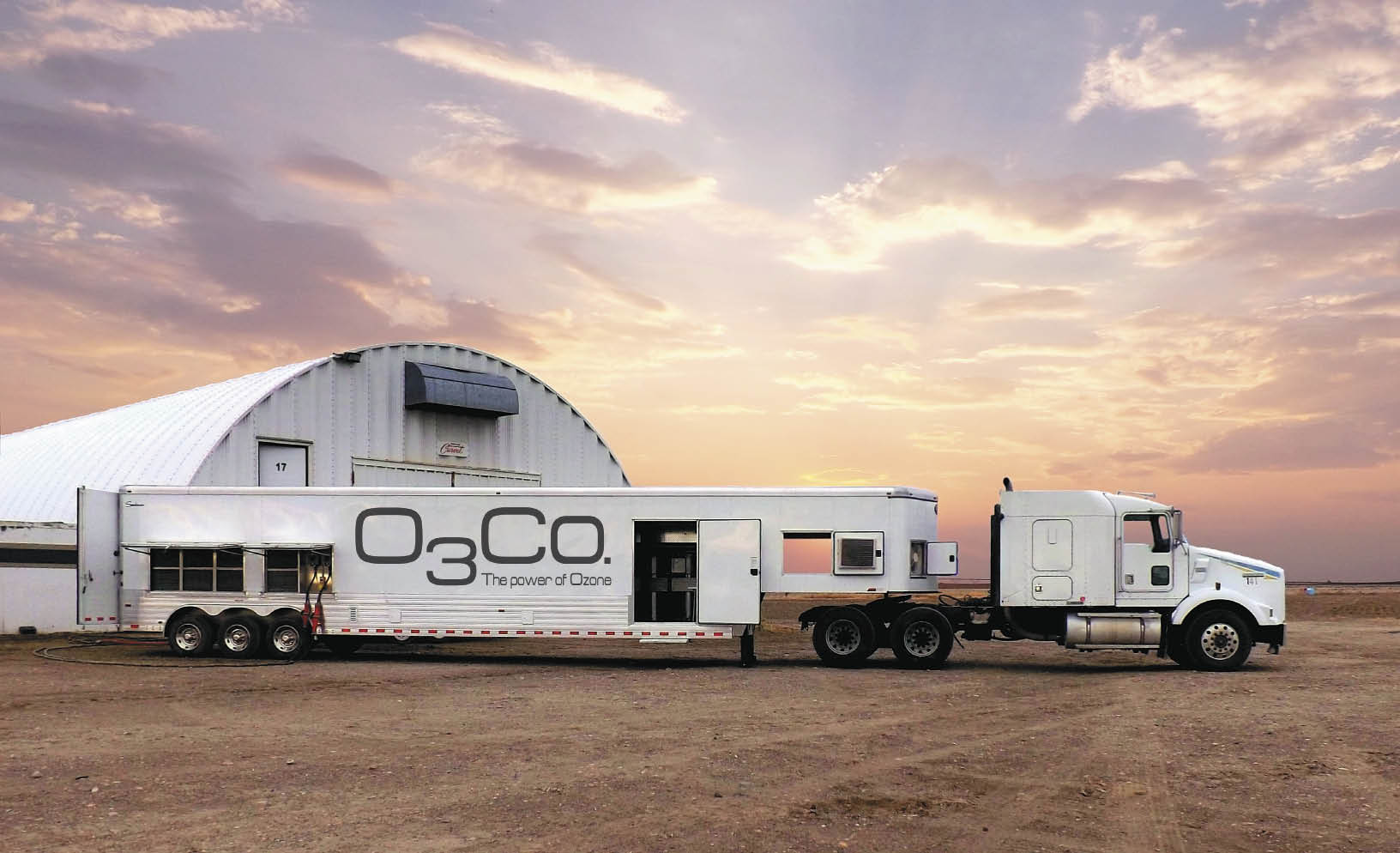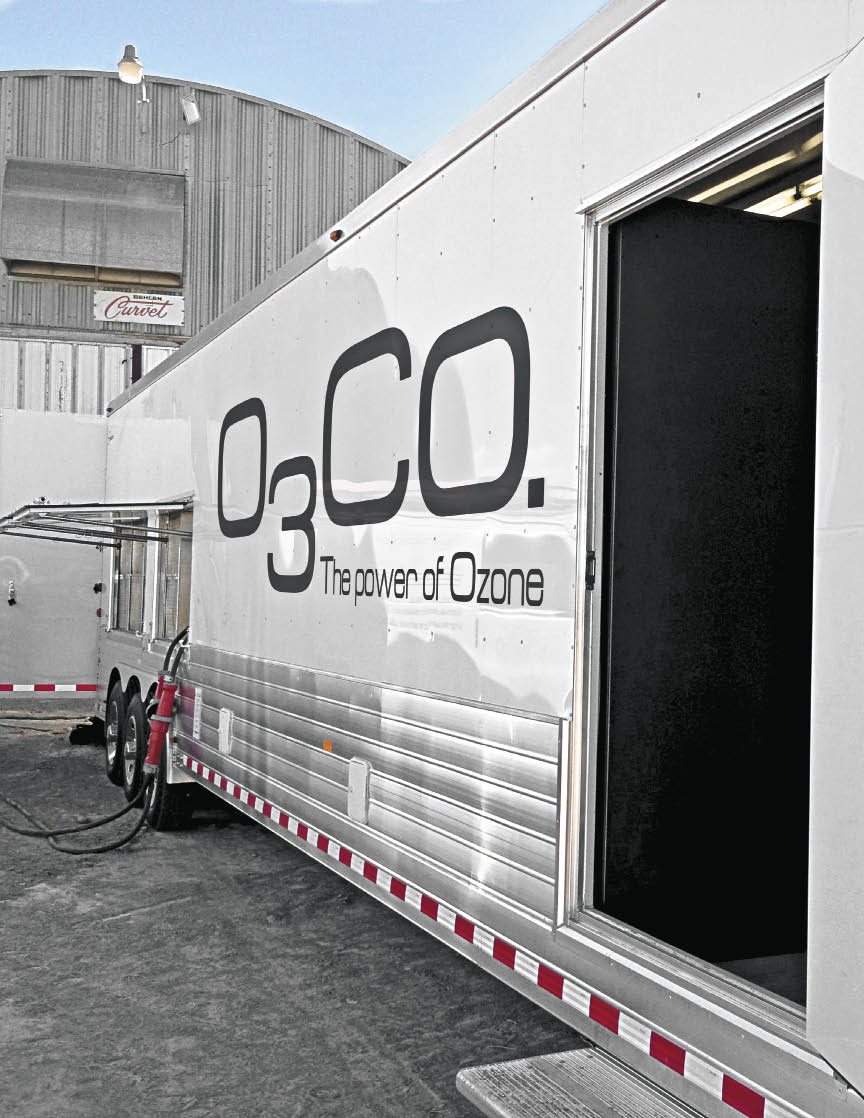
What is ozone? It is an unstable form of oxygen with three oxygen atoms instead of two. Oxygen is O2, and ozone is O3. It's not smog, not pollution; it's simply an unstable form of oxygen. In fact, ozone is produced in Nature during a thunderstorm. When you walk outside after a storm and smell the freshness in the air, that refreshing scent is a result of Mother Nature having used natural, safe ozone to purify the air.
The third oxygen atom is not tied very tightly to the other two atoms in an ozone molecule. The third molecule breaks away, leaving pure oxygen O2, and a single oxygen molecule, O1. This single molecule will immediately begin looking for a place to attach itself, and most often, will combine with bacteria, fungi, spores, etc., in a process called oxidation.
When this free oxygen molecule combines with the organisms, it basically causes the cell wall of the organism to burn up, allowing the living material on the inside to leak out, where, with no nourishment or protection, it dies. This entire process leaves nothing but a burned-out shell. For this reason, ozone is a powerful cleaner and disinfectant. The really good news is there are no harmful chemical residues left behind-just oxygen and carbon dioxide.
In 1994, eastern Idaho potato grower Rollie Walker was approached by a small southern Idaho businessman who was looking for investors to develop a process he had patented for making ozone. Walker became intrigued with the ability of ozone to sanitize. He realized that in addition to purifying and disinfecting air and even water, ozone truly is Mother Nature's strongest weapon to destroy bacteria.
Studies in 1994 showed that ozone could enhance a plant's inherent resistance to disease. Research trials displayed attributes that protected the surface of fruits and vegetables from the future formation of pathogens.
Walker wondered if ozone could be safely and effectively used to kill the bacteria on the surface of potatoes and reduce the potential spread of spoilage in storage. Nothing was more threatening or destructive than the loss that results in a pile of good quality potatoes from the spread of infection from a few infected potatoes.
Having always been impressed with Lynn Johnson's ability to engineer and develop extensive potato-handling equipment and by his manufacturing background, they asked Johnson to help them develop ozone for agriculture, specifically potatoes.

During initial testing, with the assistance of the University of Idaho Extension Service, they learned ozone could provide effective control of many harmful bacteria that could be found on the potato surface, such as Erwinia (soft rot), Fusarium (dry rot), Helminthosporium (silver scurf), Phytophthora (late blight) and Rhizoctonia (black scurf). They also discovered that not only could ozone kill the bacteria, but it reduced the spread of storage contamination resulting from bacteria, pink rot and frost damage. It can also be used to keep many foods safe, requiring no chemicals.
As a result, O3Co Company was born. The company acquired the ozone-related patents and made a commitment to further the research and development of ozone treatment on storage of potatoes, onions and in other potential ag markets. Soon afterward, another eastern Idaho grower, Carl Taylor, joined the partnership when he saw the results on their own crop coming out of storage.
Since the mid-1990s, O3Co has treated nearly 100 million cwt of potatoes. The growers clearly recognize the added value of using ozone in storage treatments and how it can extend the quality of the crop. For the cost of a few pennies per cwt, a grower can extend the storage quality of his entire crop.
In ensuing years, the company has improved equipment designs and treatment methods. These advances have resulted in a 3,000-percent increase in ozone production per hour over original machine designs. A very important lesson was that the powerful, oxidizing effects of ozone when applied continuously could cause rust in a steel building. O3Co decided to change its entire approach and, rather than apply a continuous amount of ozone to contain bacteria, molds, etc., it would make larger machines and apply higher amounts of ozone in shorter periods. It was found there was no rusting and a better kill rate of bacteria was achieved. Since then, the company recommends "blasting" storages, getting control and moving on. Results have proven much more effective and side effects have become nonexistent.
The company has also found it could produce the largest quantity of pure ozone with the most reliable mobile ozone generator available anywhere.
"We can treat a 100,000 cwt storage in as little as 48 hours. In the past, it would take up to 300 hours to fully treat a cellar this size," Walker says. "This is more convenient and cost-effective for the grower and there is less interruption of normal storage routines."
Each year O3Co continues to treat storages with excellent results and satisfied customers.
"If you have a storage you are concerned about, there is no better insurance policy you could buy to extend the quality and storage life of your potatoes," Johnson says.
In addition to working with UI, the company has partnered on research projects with Purdue University, Kansas State, North Dakota State, Texas A&M and the Idaho National Laboratory on potatoes, onions and grains. In 2008, O3Co expanded into treating grain in storage with ozone, in a partnership with Archer Daniels Midland Company (ADM).
"The bottom line for us is that we have found from our own experience that ozone storage treatments work. O3Co can help use Mother Nature's strongest weapon to destroy bacteria to extend the storage life of your potato and onion crop," Walker explaines.
Visit O3Co's website at www.o3co.com or call (208) 932-0738.